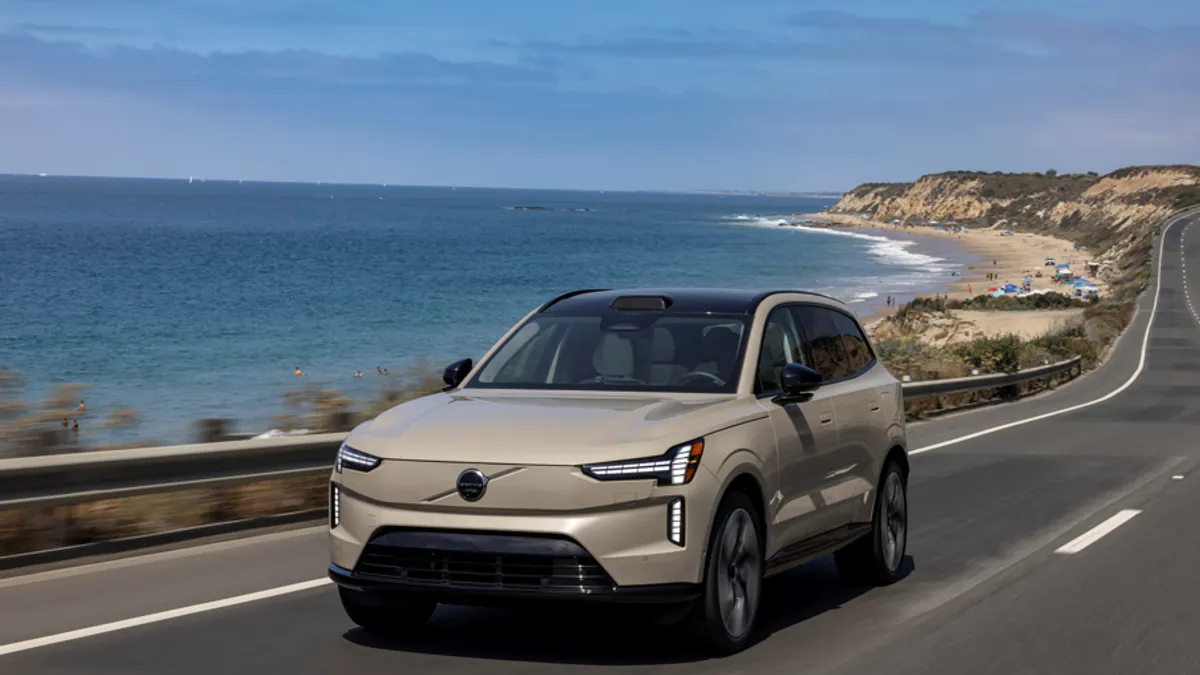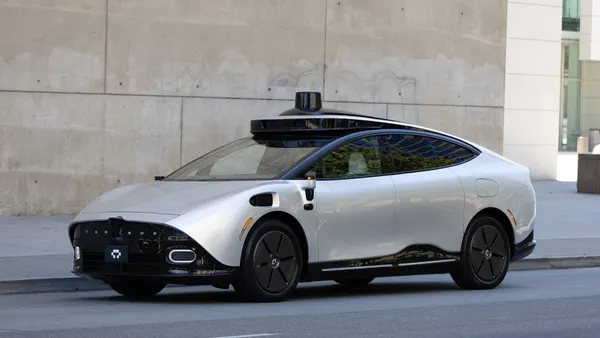A new plug-in hybrid model may be built by Volvo Cars at its Ridgeland, South Carolina, plant as part of an efficiency move and to tap underutilized production capacity, CEO and President Håkan Samuelsson said on a call with analysts April 29.
The plans are part of the automaker’s strategy to protect profits and cut costs by 18 billion Swedish kronor ($1.8 billion) by 2026.
While Samuelsson recognized an opportunity to offset higher duties on vehicle imports through boosting domestic production, the automaker’s fast-moving cost-cutting plan already resulted in 125 job losses or a roughly 5% reduction of the Ridgeland plant’s workforce of 2,500, a spokesperson for Volvo said in an email to Automotive Dive.
Volvo did not specify tariffs as the primary driver behind its plan to cut expenses, but in a statement, Samuelsson said the actions would make the company stronger and more resilient.
“The automotive industry is in the middle of a very difficult period with challenges not seen before,” he said in the company’s Q1 earnings release. Samuelsson said turbulence in the marketplace prioritized the company’s need to improve cash flow and lower costs.
“While we still have a lot to do, our direction going forward is focused on three areas: profitability, electrification and regionalisation,” he said.
During the call with analysts, Samuelsson said to make better use of Ridgeland’s production capacity, building another vehicle at the plant was needed. The automaker currently builds the EX90, a fully electric SUV for the U.S., and European markets as well as the Polestar 3 EV SUV in South Carolina.
Volvo began producing the EX90 EV in Ridgeland last June but even as more of those vehicles are produced, Samuelsson said it still isn’t enough to meet the factory’s full capacity. The plant can manufacture up to 150,000 vehicles annually.
“So, we need another car, which we will bring in as soon as possible,” he said on the call. But added it won’t be an all-electric vehicle.
Though he did not specify a model, Samuelsson said “it has to be a more conventional plug-in hybrid in a very attractive and popular shape and form, so it can really bring up the volume.” Growing electrified vehicle sales is a priority for Volvo, which wants both EVs and plug-in hybrids to represent between 90% and 100% of its sales by 2030.
As production volume rises in Ridgeland, it could also lead to lower parts costs, as some components are shared between Volvo and Polestar. Volvo and Polestar are both owned by China-based automaker Zhejiang Geely Holding.
“I mean that’s a unique opportunity, very few carmakers can do,” Samuelsson said.














